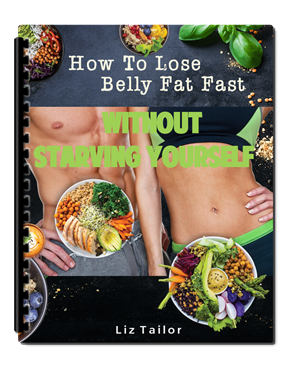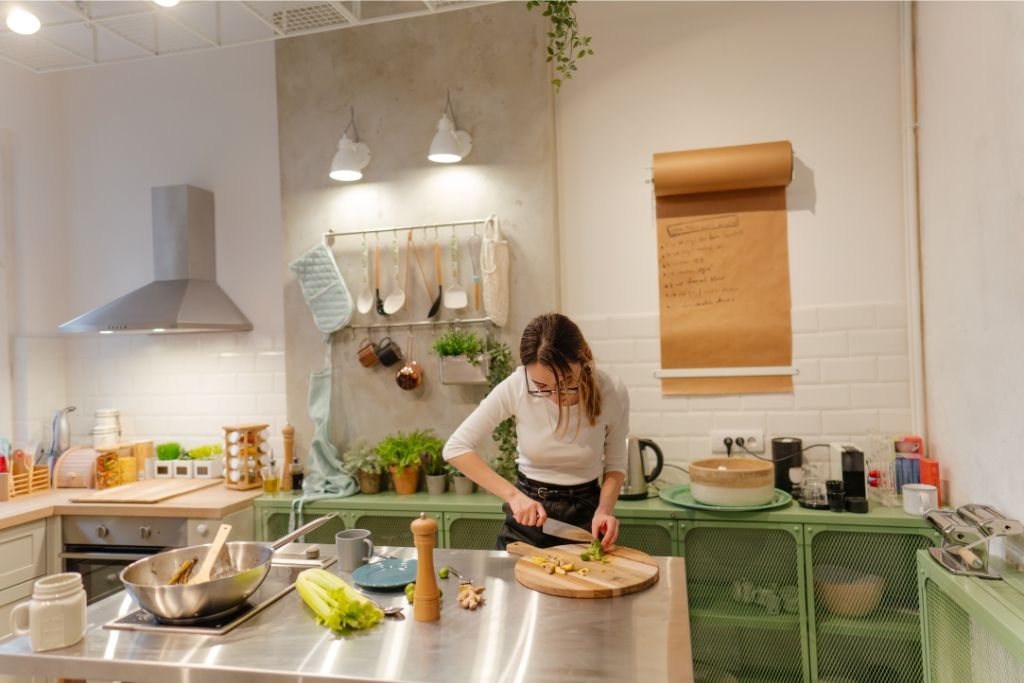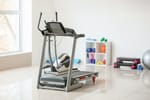Are you tired of spending too much money on takeout and unhealthy meals? Do you want to start eating healthier but don't have enough time?
Well, meal prepping could be the solution you need! By prepping your meals, you can save time, and money, and maintain a healthy lifestyle.
Here are 10 amazing meal prep tips that will change the way you think about meal planning.
1)) Plan Your Meals In Advance
This is the most important step in meal prepping. Take a little time each week to plan your meals for the upcoming week.
This will help you stay on track and avoid making last-minute unhealthy choices.
Here is a short and efficient checklist to help you meal plan:
- Identify your dietary goals: Are you aiming for a balanced diet, weight loss, or more protein intake? Knowing your goal helps in planning.
- Research recipes: Look for recipes that align with your dietary goals, and make sure they are meals you will enjoy.
- Create a meal plan: Write down which meals you will have each day (breakfast, lunch, dinner, and any snacks).
- Prepare a shopping list: Based on your meal plan, list all the ingredients you need.
- Schedule a grocery shopping trip: Stick to your list to avoid impulsive buying.
- Decide on a meal prep day: Choose a day in the week, usually a weekend, to prepare your meals.
Planning your meals in advance is a practice that breeds success in achieving dietary goals.
It not only saves time and money but also eliminates the stress associated with last-minute meal decisions.
By keeping your health objectives front and center, meal planning helps you control what you eat, when you eat, and how much you eat.
It's the first crucial step towards a healthier, more balanced lifestyle.
2)) Invest In Quality Containers
Invest in some good quality, leak-proof containers that can be reused and stored easily.
Make sure the containers are clear so you can see what's inside, and also invest in different sizes to accommodate different types of meals.
Tips To Get The Most Out Of Meal Prep Containers:
- Consider the Material: Containers come in various materials like glass, stainless steel, and plastic. Glass and stainless steel are more durable and safer for reheating food, while BPA-free plastic containers are light and portable.
- Check for Microwave-Safe Labels: If you're planning to reheat meals in the containers, make sure they are microwave-safe to prevent any damage or leaching of unsafe materials into your food.
- Look for Leak-Proof Seals: Containers with tight-sealing lids can prevent spills and keep your food fresh for longer.
- Size Matters: Buy a variety of sizes. Small containers are great for snacks or sauces, while larger ones can hold main dishes or salads.
- Choose Stackable Designs: Containers that stack well can save space in your refrigerator or pantry, making meal prep more organized.
- Ease of Cleaning: Prefer containers that are dishwasher-safe for quick and easy cleanup.
Investing in quality containers is a fundamental part of efficient meal prepping.
The right containers safeguard your food, preserve freshness, and facilitate portion control.
They also streamline your fridge organization and make reheating more convenient.
Therefore, choosing containers made of safe materials, various sizes, leak-proof designs, and stackable features can significantly enhance your meal prep experience.
The initial investment in quality containers will pay dividends in the long run by promoting a healthier lifestyle and preventing unnecessary waste.
3)) Shop In Bulk
Bulk buying is not only a great way to save money, but it also saves you time.
Plan your meals around ingredients that are in season and cheaper in bulk.
Buy in larger quantities, portion, and freeze what you don't need.
Bulk Shopping Ideas:
- Make a list of the items you use regularly and that don't perish quickly, such as rice, pasta, or canned goods. These are ideal candidates for bulk buying.
- Use a vacuum sealer or airtight containers to store bulk items and prevent them from going stale or attracting pests.
- Don't buy perishable items in bulk unless you plan to use them quickly or have an effective method of preservation, such as freezing.
- Compare prices before buying in bulk. Sometimes, smaller quantities may be on sale and actually cheaper per unit.
- Remember to rotate your stock to ensure you're using the oldest items first, reducing waste through spoilage.
- Consider splitting bulk purchases with a friend or neighbor if you don't have enough storage space or if you won't use all of an item before it spoils.
Shopping in bulk is a practical and economical strategy that can significantly contribute to efficient meal prepping.
However, it requires careful planning, mindful storage, and smart purchasing.
By incorporating these tips into your routine, you can ensure that your bulk purchases lead to savings, reduce waste, and support your path to healthy eating.
4)) Cook In Advance
Schedule a few hours each week to cook and prepare your meals for the week. This saves time and ensures you always have homemade meals on hand.
Examples To Get You Started:
- Batch Cook: Choose recipes that you can make in large quantities, then divide into portions for multiple meals. Soups, stews, and casseroles are all great for this.
- Use a Slow Cooker: With a slow cooker, you can prepare meals in the morning and have them ready by dinner time with minimal effort.
- Pre-Cook Grains and Proteins: Cook grains (like rice or quinoa) and proteins (like chicken or tofu) in advance. They can form the basis of different meals throughout the week.
- Prepare Chopped Vegetables: Chop a variety of vegetables in advance. They can be quickly added to salads, stir-fries, or as sides to your main dish.
- Freeze Meals: Prepare meals that freeze well, such as lasagna or chili. You can reheat a portion when you need a quick meal.
- Make Use of Your Oven: Roast a variety of vegetables, bake a whole fish, or cook chicken breasts in one go. This method allows you to prepare several meals at once with minimal effort.
- Plan for Leftovers: If you're making a dinner, plan to make a bit extra. Leftovers can be used for lunches or repurposed into a new meal.
Cooking in advance is an effective strategy to ensure you always have wholesome and nutritious meals ready, even on your busiest days.
By investing a few hours each week into meal preparation, you essentially gift yourself more time throughout the week.
This approach not only streamlines your daily routine but also empowers you to maintain control over your dietary habits.
When you cook in advance, you become the architect of your meals, accommodating your preferences and nutritional needs, and steering clear of unnecessary additives or unhealthy choices.
5)) Use Your Freezer
Don't forget to utilize your freezer. Freeze meals for later and thaw them overnight before you plan to eat. This is a great way to save time and avoid food waste.
Tips To Help You Get The Most Out Of Freezing Your Meals:
- Freeze Prepared Meals: Ready-to-eat meals like soups, stews, or casseroles can be frozen and reheated for quick meals.
- Use Ice Cube Trays: Freeze sauces, herbs in olive oil, or homemade stock in ice cube trays for easy portioning.
- Freeze Fruits and Vegetables: Fruits and vegetables can be frozen when in season and then used in smoothies or cooking.
- Pack Meals Properly: Use freezer bags or vacuum seal bags to pack meals. Make sure to remove as much air as possible to prevent freezer burn.
- Label Everything: Always label your bags or containers with the date and the contents. This will help you keep track of what you have and use it before it spoils.
- Freeze Leftovers: If you have leftovers that you won't be able to eat before they spoil, freeze them for a future meal.
- Freeze in Portions: Freeze meals in individual portions. This way, you only defrost what you need, reducing waste.
Effectively utilizing your freezer can streamline your meal preparation process and drastically reduce food waste.
It allows you to preserve prepared meals, bulk purchases, and seasonal produce for future use, thus saving both time and money.
However, it's crucial to pack and label your food appropriately to maintain its quality and flavor.
By incorporating these tips into your routine, your freezer can become a valuable tool in your pursuit of efficient and economical meal prepping.
6)) Mix And Match Ingredients
Mix and match your ingredients to create a variety of meals. Use the same protein, but change up the veggies and spices.
This will help you avoid getting bored with your meals.
Here Are Some Examples:
- Experiment with Different Spices: The same ingredients can taste completely different when seasoned with different spices. Try Italian seasonings in one meal and Mexican spices in another.
- Change Up the Cooking Method: Grill, sauté, steam, or roast your vegetables for different flavors and textures.
- Try Different Proteins: If you usually use chicken, try tofu, fish, or beans instead.
- Swap Out Grains: Use different grains like quinoa, brown rice, or couscous to change the base of your meal.
- Incorporate Different Sauces: Mix and match sauces like marinara, teriyaki, or pesto to drastically alter the flavor profile of your dish.
- Use Various Vegetables: Switch up the vegetables in your meal. Different vegetables offer different flavors and nutrients.
- Experiment with Different Cheeses: Try using different cheeses to add a new flavor dimension to your meals.
Mixing and matching ingredients provides a dynamic and enjoyable approach to meal planning.
By swapping proteins, grains, vegetables, and seasonings, you can create a multitude of diverse and exciting dishes from the same base ingredients.
This not only prevents mealtime boredom but also allows you to explore different cuisines and flavors.
Ultimately, the art of mixing and matching contributes to a more creative, nutritious, and satisfying eating experience.
7)) Keep It Simple
You don't need to be a gourmet chef to meal prep. Simple meals can be just as delicious and nutritious.
Stick with dishes that are easy to make in bulk and can be stored in the fridge or freezer.
Examples:
- Batch Cook Grains: Cooking grains like rice, quinoa, or pasta in bulk saves time and can be used in various dishes.
- Prep Veggies: Wash, chop, and store vegetables for quick use in meals throughout the week.
- Use Canned Goods: Canned beans, corn, and tomatoes can be quick and nutritious additions to meals.
- Consider One-Pot or One-Pan Meals: Recipes that require just one pot or pan, such as soups, stews, or sheet pan dinners, simplify cooking and cleanup.
- Utilize Pre-cut or Frozen Vegetables: These can save prep time and still contribute valuable nutrients to your meals.
- Create Simple Protein Options: Baked chicken, hard-boiled eggs, or canned tuna are easy protein options.
- Make Easy Snacks: Prepare simple snacks like carrot sticks, hummus, or yogurt with berries for when you need a quick bite.
Simplicity is key when it comes to meal preparation. By choosing straightforward recipes, preparing components in bulk, and utilizing convenient options like canned goods or pre-cut vegetables, you can streamline the cooking process without compromising on taste or nutritional value.
A simple meal prepared at home is often healthier and more cost-effective than dining out or opting for prepackaged meals.
Embrace the simplicity and enjoy the benefits of meal prepping with ease.
8)) Prep Snacks
Prepping snacks like cut-up veggies and trail mix will help you avoid unhealthy snacking. Keep them in portioned containers in the fridge or pantry for easy access.
Snack Prepping Ideas:
- Prepare Veggie Sticks and Hummus: Cut up carrots, celery, and bell peppers and pair them with hummus for an easy, nutritious snack.
- Make Your Own Trail Mix: Combine nuts, seeds, dried fruit, and dark chocolate for a sweet and salty trail mix. Portion it out so it's ready to grab and go.
- Hard-Boil Eggs: Hard-boiled eggs are a protein-packed snack that can be prepared in advance and stored in the fridge.
- Portion Out Greek Yogurt and Berries: Divide Greek yogurt and fresh berries into individual containers for a quick, protein-rich snack.
- Make Healthy Energy Balls: Combine oats, nut butter, and honey, form into balls, and refrigerate for a healthy and filling snack.
- Prepare Fruit Salad: Cut up a variety of fruits and store them in the fridge. They can be quickly served with a dollop of yogurt or a handful of granola.
- Pre-cut Cheese Portions: Divide blocks of cheese into individual portions for an easy, high-protein snack. Pair with whole-grain crackers if desired.
Snack preparation is an integral part of successful meal planning. By setting aside time to prepare healthy snacks like veggie sticks, trail mix, or yogurt with berries, you're equipping yourself with nutritious, readily available options for when hunger strikes between meals.
Pre-portioned snacks not only help curb overeating but also provide a diverse range of nutrients to complement your meals.
Ultimately, intentional snack preparation can contribute to a balanced diet and help maintain consistent energy levels throughout the day.
9)) Label Your Containers
Label your meal prep containers with the name of the dish and the date you made it.
This will help you keep track of what you have in the fridge and when it needs to be eaten.
Ideas For Labeling Containers:
- Invest in a Label Maker: A label maker can make it easy to generate clear, easy-to-read labels for your containers.
- Write Directly on the Container: If your containers are not reusable, simply use a permanent marker to write directly on the lid or side.
- Use Masking or Washi Tape: If you want something removable, masking or washi tape can be written on and then peeled off when you're done with it.
- Download a Labeling App: There are many smartphone apps that allow you to print custom labels.
- Use Freezer Tape for Cold Storage: If you're freezing meals, consider using freezer tape, which is designed to stick at cold temperatures.
- Include Important Details: Don't just write the name of the meal, also include the date it was made and any important notes (like if it contains potential allergens).
- Organize Your Containers: Put newer meals at the back and older ones at the front, to ensure everything gets eaten before it goes bad.
Labeling your meal prep containers is a practical and organized approach to meal management.
It ensures the freshness and safety of your meals by keeping you informed about when each meal was made.
Whether you're using a label maker, an app, or simply a marker, taking the time to clearly label your containers can help prevent food waste and ensure you're consuming your meals while they're at peak freshness.
This habit also adds a level of convenience, saving you time guessing what's in each container or when it was prepared.
In essence, effective labeling is a simple step that can significantly streamline your meal-prepping process and enhance your overall meal-prep experience.
10)) Utilize Leftovers
Don't throw out leftover ingredients. Use them to create new meals like stir-fries, casseroles, or omelets. This reduces food waste and saves you money.
Tips For Getting The Most Out Of Leftovers:
- Freeze Leftovers: Preserve your leftovers by freezing them for later use in soups, stews, or stir-fries.
- Leftover Stir-fry: Use leftover vegetables and proteins in a quick stir-fry. Add some sauce for flavor and serve it over rice or noodles.
- Casserole: Combine leftover meats or vegetables into a casserole. Add some cheese on top and bake until golden.
- Create a New Salad: Leftover grilled chicken or roasted vegetables can be added to greens for a quick and healthy salad.
- Use in Omelets or Frittatas: Leftover vegetables, meats, or cheeses can be thrown into an omelet or frittata for a quick breakfast or dinner.
- Add to Pasta: Add leftover vegetables or proteins to a simple pasta dish for a new flavor profile.
- Make a Pizza: Use leftovers as pizza toppings. This can include anything from veggies and meats to cheeses.
- Turn into Soup: Blend leftover vegetables with some broth to make a quick soup.
- Meal Prep with Leftovers: Plan future meals around your leftovers. For example, leftover roast chicken can be used in sandwiches, salads, or pastas.
- Leftover Taco Night: Use leftover proteins and veggies for a quick and easy taco night. Simply put out all the ingredients and let everyone make their own delicious combinations.
Utilizing leftovers effectively is not only a cost-effective strategy but is also an excellent way to reduce food waste.
By incorporating leftovers into new meals like stir-fries, casseroles, or salads, you can ensure that no food goes to waste while also adding variety to your meals.
Furthermore, creative use of leftovers can add unexpected flavors and textures to your dishes, making mealtime more exciting.
Ultimately, leftovers are far from second-best; they can be the secret ingredient to delicious, sustainable, and budget-friendly meal planning.
Conclusion
In conclusion, successful meal planning involves preparation, organization, and creativity.
It begins with thoughtful grocery shopping, followed by strategic meal planning, and finally, efficient meal prep.
Simple actions like preparing snacks, labeling containers, and utilizing leftovers can greatly enhance your meal prep experience, save you time and money, and contribute to healthier eating habits.
Moreover, these practices discourage food wastage and promote sustainability.
With these tips and strategies, meal planning can become more than a chore; it can transform into an enjoyable process that brings you closer to your health and wellness goals.
So, get started on your meal planning journey today and experience the difference it can make in your life.
Related Articles and Guides
- How To Meal Prep For Weight Loss
- 10 FAQs On Meal Prepping For Weight Loss Success
- 10 Meal Prep Hacks For A Busy Schedule
- 10 Cheap Meal Prep Hacks To Simplify Your Life
- 10 Healthy Meal Prep Tips To Make Your Life Easier
- 10 Fool-Proof Meal Prep Tips For Weight Loss
Download Our Free E-book!







